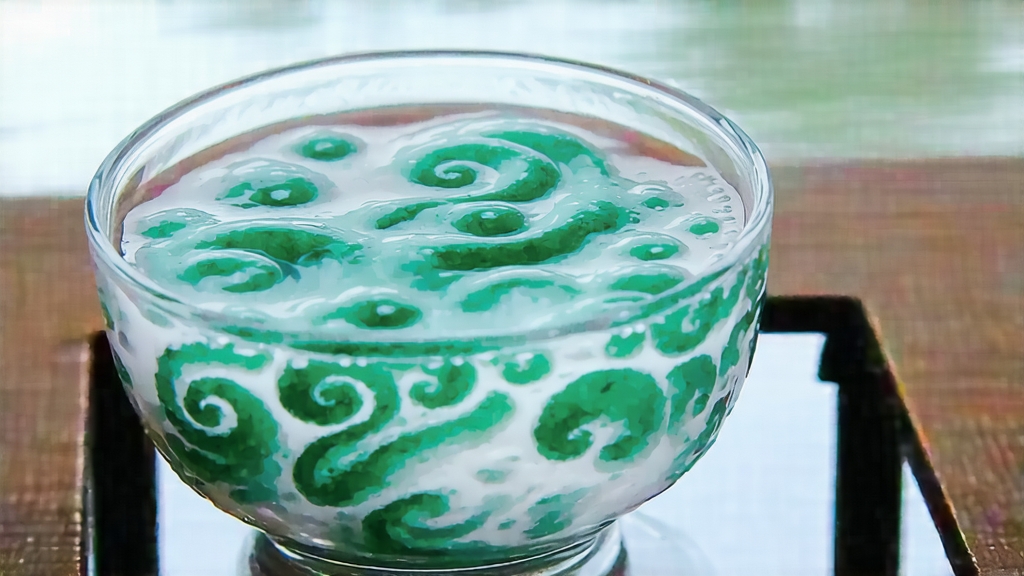
Biluochun, whose name translates literally to “Green Snail Spring,” is one of China’s ten most celebrated teas, yet it remains a quiet jewel outside specialist circles. Produced only in a narrow strip of hills where Jiangsu Province meets the eastern edge of Taihu Lake, this tea carries within its tiny spiral leaves the perfume of fruit trees, the mineral breath of limestone soil, and the craftsmanship of four centuries. To understand Biluochun is to listen to a spring whisper that begins in the Tang dynasty and still lingers in every delicate infusion.
Historical roots
The first written record appears in the Tang-era Classic of Tea, but the tea then called “Xia Sha Ren Xiang” (Astounding Fragrance) did not acquire its modern name until the late Ming. Legend credits a Kangxi-era emperor who, while touring the region, found the infusion so refreshingly aromatic that he renamed it “Green Snail Spring” for its spiral shape and season of harvest. Imperial patronage elevated the tea to tribute status; each spring, carts sealed with yellow silk carried the first kilograms to the Forbidden City along the Grand Canal. European missionaries stationed at the Qing court mailed small tins to Paris and Vienna, where the tea was labeled “Spiral of Taihu” and became a curiosity in aristocratic salons. Yet production remained minuscule—only the buds of a single local cultivar, Zao Ye Zhong (Early Leaf Lineage), were deemed worthy—so the outside world tasted it rarely and understood it even less.
Micro-terroir and cultivars
Authentic Biluochun comes from only two counties: Wuzhong on the lake’s eastern shore and Xishan Island inside the lake itself. Here the northern subtropical climate collides with cool mist rising from 2 300 km² of water, creating perpetual cloud cover that diffuses sunlight and slows photosynthesis. The result is an unusually high ratio of amino acids to polyphenols, giving the tea its hallmark sweetness and low astringency. Two cultivars dominate: the heirloom Zao Ye Zhong, which germinates in mid-March and yields the most complex aromatics, and the hardier Wu Niu Zao, bred in the 1970s to extend picking by ten days. Farmers interplant tea bushes with peach, plum, and loquat trees; the fruit blossoms open exactly when the tea flushes, and their nectar settles on the downy buds, contributing a natural fruity note impossible to replicate elsewhere.
Plucking standards
The picking window spans Qingming to Grain Rain—roughly 20 days—when daytime temperatures hover between 15 °C and 20 °C. Only the terminal bud and the immediately subtending leaf are taken, a state known in local dialect as “yi ya yi ye, zhan kai qi ye,” meaning “one bud, one leaf, just beginning to unfurl.” Experienced pickers can gather 600 g of fresh leaf in a morning, but that shrinks to 120 g after sorting and de-stemming, and finally to 30 g of finished tea after firing. In short, ten thousand plucks yield one pot.
Crafting the spiral
The transformation from fragile leaf to jade curl happens the same evening of harvest. The entire micro-region lacks large factories; instead, each family operates a bamboo-walled workshop of less than 20 m². The process is divided into six stages: withering, fixation, primary roll, secondary roll, final shaping, and drying.
- Withering: leaves are spread on sieves under a gentle breeze for 30 minutes, losing about 10 % moisture and developing a faint grassy perfume.
- Fixation: a 60 cm diameter wok is heated to 180 °C, then quickly cooled to 120 °C as the tender leaves are tossed by hand for 3–4 minutes. The goal is to arrest oxidation while preserving the silvery down.
- Primary roll: temperature drops to 80 °C; leaves are massaged against the wok in a figure-eight motion, beginning the characteristic curling.
- Secondary roll: the most artistic stage. The worker cups a handful of leaves and rolls them against the wok with three fingers, applying pressure in pulses synchronized with the leaf’s elasticity. Done correctly, the bud bends into a tight spiral without breaking the surface.
- Final shaping: temperature is lowered to 60 °C; the tea is coaxed into uniform 1.5 cm spirals resembling tiny snails.
- Drying: the wok is almost cool; residual moisture is driven off